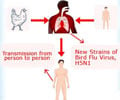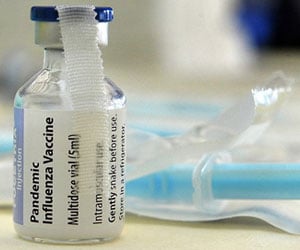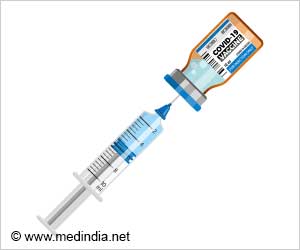In mice, influenza vaccine delivered via microneedle patch provided 100 percent protection against a lethal influenza virus.

Instead of a liquid containing whole killed or attenuated virus, this vaccine uses dry virus-like particles (VLPs) which simply coat the needles in the presence of a simple stabilizing agent, reducing the need for refrigeration — a potential boon for use in developing countries. The lower dose required when using microneedles also reduces the potential for side effects, such as lung inflammation.
"This method can induce higher levels of IgG2a antibodies as well as rapid recall immune responses following lethal challenge infection. Our previous study showed that microneedle vaccination induced higher levels of antibody-secreting cells in spleen and bone marrow compared to intramuscular vaccination," says Sang-Moo Kang of Georgia State University, a researcher on the study.
Earlier studies by this group showed that influenza VLP-coated microneedles actually produced higher short-term protection than conventional intramuscular immunization. In this study the researchers tested how effective the long-term protection of the vaccine was. Mice that received the vaccine were 100 percent protected from a lethal challenge with the influenza virus 14 months after vaccination.
Kang says his aim was to develop an easier and pain-free method of vaccine delivery. He also says that patients could probably use this system to vaccinate themselves.
Source-Eurekalert
 MEDINDIA
MEDINDIA




 Email
Email










